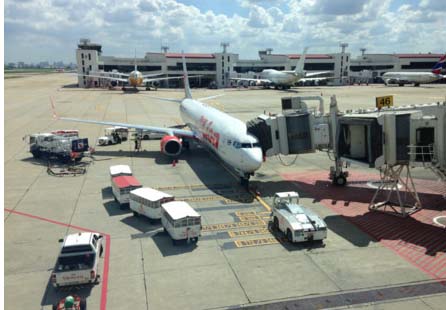
Part 2
In the first installment of this topic we discussed the components of a potentially integrated FBO business model—Fixed Base Operations (FBO), Maintenance Repair and Overhaul (MRO) and Aircraft Charter and Management (ACM). Each of these business segments can stand on their own, and there are both large national companies which provide excellent specialized service as well as smaller independent operators who also offer a compelling value proposition to the customer. Each segment has its own structural and competitive characteristics which influences how easy it is to grow to scale, either at a single airport or at multiple locations.
Each segment has also has its own financial profile. FBOs generally have the highest profit margins, although since a large portion of their revenue is based upon fuel sales which are constantly changing these percentage margins are not as meaningful. FBOs usually consist of a campus of facilities, which requires significant capital both for the initial outlay and subsequent upkeep. MRO companies margins tend to be lower, largely due to an increased regulatory burden and the fact the demand for their services is less geographically specific then FBOs. The may own their own facilities or lease from another leaseholder at an airport. ACM margins are similar to MRO and for the same reasons; ACM companies managing a significant number of heavy jet aircraft with international Operations Specifications (OPSPECs) face the highest regulatory burden.
Given that these businesses can be profitable and well run as specialized service providers, why would they be better off run as parts of one business? In the integrated FBO model, value is created through a few different streams. The first is consistent multiple service offering to the customer, e.g. one stop shopping. If an FBO provides first-rate line service, chances are the customer would likely use the FBO for other services if everything else is equal (the FBO provides the service, is FAA/OEM approved, has local capacity, etc.). This simplifies the transaction for the customer, which creates a competitive advantage for the service provider. Next, it creates a closer relationship with the customer. As an example, an ACM operator who manages a customer’s airplane usually has a trustworthy relationship with that owner; the operator can influence the owner’s other buying decisions. If the same operator also provides additional services beyond ACM, their customer becomes more important in some respects. If an ACM operator advises taking some maintenance requirements to an affiliated MRO company, that MRO company will generally place a greater sense of urgency on their mutual customer than one which is an unrelated third party. Last, the integrated business model can provide greater scale and diversity than a narrower focused specialized service. Scale is important is greater size provides stability and the ability to better weather inevitable downturns. Diversity goes back to classic asset portfolio theory—since not every operations will consistently grow according to plan, asset diversification (especially among the business segments) mitigates the risk of significant adverse results all at once.
The answer? The only reasonable conclusion is that owners and managers of general aviation services businesses should operate a business model with which they feel comfortable—regardless of which segments that business model entails. Specialized service providers offer just that, and the classic “full service” FBO model offers one stop shopping for its customers which see value in the integrated model.